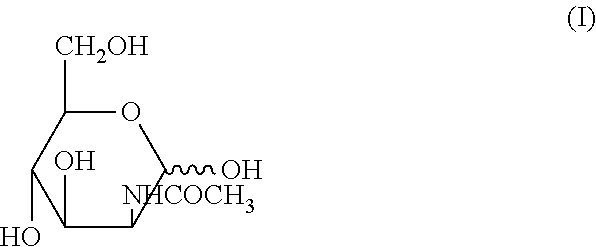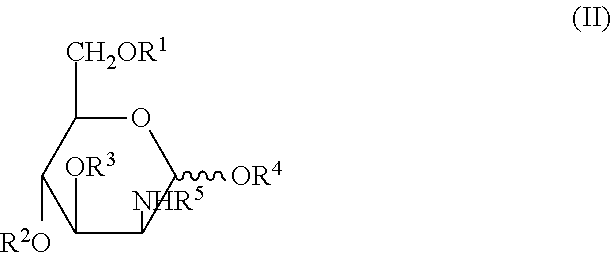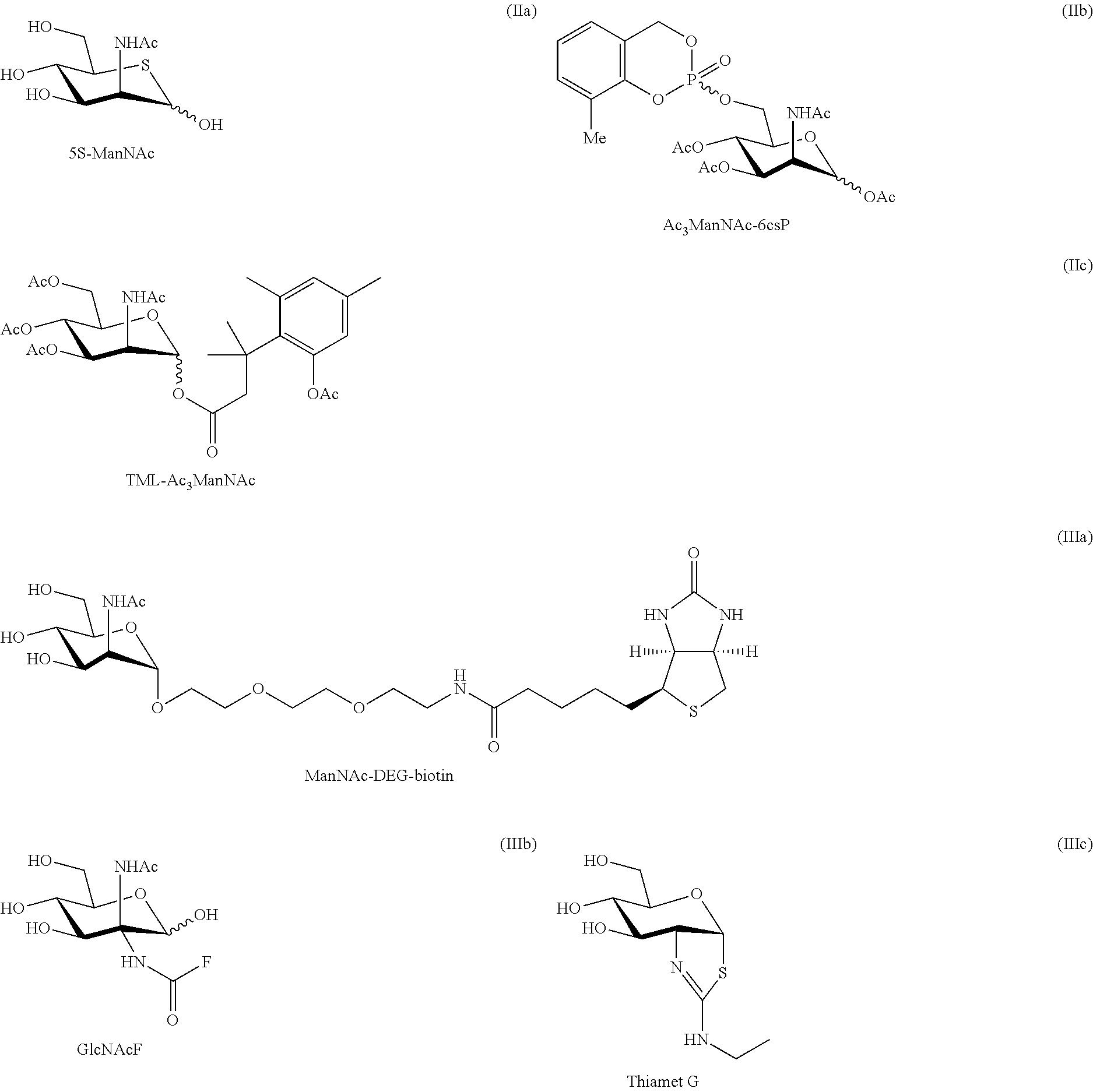Methods for inducing orexin neurons and agent for treating narcolepsy or eating disorder
a technology of orexin and neuron, which is applied in the field of inducing orexin neurons, can solve the problems of inability to report on successful methods for inducing adverse influences on maintenance of homeostasis, and inability to induce orexin neurons in vivo or in vitro, so as to achieve high safety and prevent the effect of orexin neuron declin
- Summary
- Abstract
- Description
- Claims
- Application Information
AI Technical Summary
Benefits of technology
Problems solved by technology
Method used
Image
Examples
example 1
Induction of Expression of an Orexin Gene (Hcrt) with ManNAc Using a System of Induction of Neural Differentiation from an ES Cell
Analysis Using a Stromal Cell-Derived Inducing Activity (SDIA) Differentiation Culture System
Differentiation Culturing
[0145]Mouse ES cells (J1 strain) which had been maintained in a medium for an ES cell [DMEM (Wako) added with 15% FBS (Biowest), 1 mM sodium pyruvate (Invitrogen), 100 mM β-mercaptoethanol (Invitrogen), 2 mM L-glutamine (Invitrogen), 1 mM non essential amino acid (Invitrogen), 50 U / ml penicillin / 50 μg / ml streptomycin (Invitrogen), 2000 U leukemia inhibitory factor (Chemicon, CA)] were seeded on a 10 cm culture dish so that the cell count became 1×105 cells per culture dish on which PA6 stromal cells had been seeded in advance, and differentiation induction was performed in a medium for neural differentiation [Glasgow MEM (Invitrogen) added with 10% KSR (Invitrogen), 100 mM β-mercaptoethanol (Invitrogen), 1 mM non essential amino acid (Invi...
example 2
Analysis Using a SFEB / gfCDM*Differentiation Culture System
[0152]*: abbreviation of serum-free culture of embryoid body-like aggregates / growth factor-free chemically defined medium
Differentiation Culturing
[0153]Mouse ES cells (J1 strain) which had been maintained in a medium for an ES cell were seeded on a 96-well low adhering round-bottom culture dish (Nunc) so that the cell count became 10,000 cells per well, and cultured with gfCDM [IMDM / F12 (Invitrogen) added with 5 mg / ml BSA (SIGMA), 450 μM Monothioglycerol (Wako), 1× chemically defined lipid concentrate (Invitrogen), 50 U / ml penicillin / 50 μg / ml streptomycin] for 7 days. The cells were cultured in 150 μl of a medium per well. On 7th day of differentiation culturing, the medium was exchanged with a DFK medium [DMEM / F12 (Invitrogen) added with 7 g / 1 glucose, 10% KSR, 50 U / ml penicillin / 50 μg / ml streptomycin], and on 10th day, half the amount of the medium was exchanged with a DFNB medium [7 g / 1 glucose, 1×N2 (Wako), 1×B27 (Invitro...
example 3
Orexin Inducing Action of ManNAc on a Mouse Fetus-Derived Neurosphere (NSph)
[0157]Culture of an Endbrain-Derived Neurosphere (NSph) and Differentiation Induction into a Neuron
[0158]A culture and differentiation induction experiment was performed based on the method of Ciccolini and Svendsen (1998, J Neurosci. 18(19): 7869-80). An outline is shown in FIG. 6. An endbrain was removed from a C57BL / 6N mouse fetus having an embryonic age of 14.5 days in ice-cold PBS / 0.6% glucose. Dispersion into a single cell was performed by pipetting, and cells were suspended in a medium for NSph [DMEM / F12 (Wako) containing 1×B27 (Invitrogen), 20 ng / ml EGF (Sigma), 20 ng / ml FGF-basic (PEPROTECH), 5 μg / ml heparin (Sigma)] and seeded on a 10 cm petri dish in an amount of 2×106 cells / 10 ml. Half the amount of the medium was exchanged 3 days after initiation of culturing, and culturing was performed for another 3 days (total 6 days).
[0159]NSph was recovered 6 days after initiation of culturing, and cells we...
PUM
| Property | Measurement | Unit |
|---|---|---|
| concentration | aaaaa | aaaaa |
| pH | aaaaa | aaaaa |
| pH | aaaaa | aaaaa |
Abstract
Description
Claims
Application Information
 Login to View More
Login to View More - R&D
- Intellectual Property
- Life Sciences
- Materials
- Tech Scout
- Unparalleled Data Quality
- Higher Quality Content
- 60% Fewer Hallucinations
Browse by: Latest US Patents, China's latest patents, Technical Efficacy Thesaurus, Application Domain, Technology Topic, Popular Technical Reports.
© 2025 PatSnap. All rights reserved.Legal|Privacy policy|Modern Slavery Act Transparency Statement|Sitemap|About US| Contact US: help@patsnap.com



